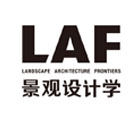注:本文為刪減版��,不可直接引用�����。原中英文全文刊發(fā)于《景觀設(shè)計(jì)學(xué)》(Landscape Architecture Frontiers)2023年第11卷第3期“基于景觀的遺產(chǎn)實(shí)踐”。獲取全文免費(fèi)下載鏈接請點(diǎn)擊此處�;參考引用格式見文末。
導(dǎo)讀
國家公園是我國自然景觀最獨(dú)特的國土空間之一�����??茖W(xué)評(píng)估景觀資源價(jià)值對(duì)于實(shí)現(xiàn)國家公園原真性與完整性的保護(hù)具有重要作用。本文以錢江源國家公園體制試點(diǎn)區(qū)為例����,采用條件價(jià)值法,通過調(diào)研內(nèi)部群體和外部群體對(duì)假想市場項(xiàng)目的支付意愿�����,對(duì)該國家公園景觀資源價(jià)值進(jìn)行貨幣化核算評(píng)估�,采用Logistic回歸模型分析影響景觀資源價(jià)值的關(guān)鍵因素。結(jié)果顯示���,外部群體支付率高于內(nèi)部群體�����。改善生態(tài)環(huán)境是不同群體愿意為假想市場項(xiàng)目進(jìn)行支付的主要原因�,但自身收入低是導(dǎo)致內(nèi)部群體拒絕支付的主要原因,認(rèn)為假想市場項(xiàng)目應(yīng)由財(cái)政支付是外部群體拒絕支付的主要原因����。研究區(qū)域景觀資源價(jià)值中,外部價(jià)值明顯高于內(nèi)部價(jià)值����,而態(tài)度因素比人口和環(huán)境因素對(duì)景觀資源價(jià)值的影響更大�。國家公園景觀資源價(jià)值受到多元利益群體的認(rèn)知、訴求和利益驅(qū)動(dòng)的影響�,研究建議加快構(gòu)建標(biāo)準(zhǔn)化核算評(píng)估技術(shù)體系,為中國的國家公園體系建設(shè)提供支撐�。
關(guān)鍵詞
國家公園;景觀資源價(jià)值����;貨幣化核算評(píng)估;支付意愿�����;多元利益群體
基于多元利益群體支付意愿的
國家公園景觀資源價(jià)值
貨幣化核算評(píng)估
Monetized Evaluation of Landscape Resources of National Parks Based on the Willingness to Pay of Multiple Interest Groups

國家公園是中國自然生態(tài)系統(tǒng)中最重要�����、自然景觀最獨(dú)特、自然遺產(chǎn)最精華�、生物多樣性最富集的部分,在體現(xiàn)全球價(jià)值�、國家象征與國民認(rèn)同度方面具有不可替代的作用。因此���,如何科學(xué)評(píng)估國家公園景觀資源價(jià)值并核算其貨幣價(jià)值���,已成為亟需解決的重要問題。國家公園景觀資源價(jià)值涉及美學(xué)����、游憩、生態(tài)等方面�。由于景觀系統(tǒng)的復(fù)雜性、資源的動(dòng)態(tài)性�,以及對(duì)其認(rèn)知的差異性,目前學(xué)術(shù)界尚未形成公認(rèn)且較為完善的景觀資源價(jià)值核算方法和評(píng)估技術(shù)����。
從2013年我國首次提出創(chuàng)建國家公園體制起,已初步完成國家公園頂層設(shè)計(jì),但對(duì)國家公園景觀資源的認(rèn)識(shí)存在一定誤區(qū)��。因此���,建立科學(xué)合理的國家公園景觀資源評(píng)價(jià)體系將對(duì)創(chuàng)建具有中國特色的國家公園體制具有重要意義���。本文以錢江源國家公園體制試點(diǎn)區(qū)為研究對(duì)象,選取當(dāng)?shù)厣鐓^(qū)居民和管理人員(內(nèi)部群體)與外來游客(外部群體)為核心利益群體評(píng)估國家公園內(nèi)部與外部的景觀資源貨幣化價(jià)值����,旨在為推動(dòng)景觀資源價(jià)值納入國家公園生態(tài)系統(tǒng)評(píng)估體系提供參考。
錢江源國家公園體制試點(diǎn)區(qū)(以下簡稱“錢江源試點(diǎn)區(qū)”)是2015年首批設(shè)立的10個(gè)體制試點(diǎn)之一��,位于浙江省西部與江西省�����、安徽省的交界地帶�,面積約252km2���。根據(jù)體制試點(diǎn)方案與總體規(guī)劃����,錢江源試點(diǎn)區(qū)是由古田山國家級(jí)自然保護(hù)區(qū)、錢江源國家森林公園�、錢江源省級(jí)風(fēng)景名勝區(qū)三處自然保護(hù)地整合而成,并被劃分為核心保護(hù)區(qū)�、生態(tài)保育區(qū)、游憩展示區(qū)�����、傳統(tǒng)利用區(qū)四個(gè)功能分區(qū)����。錢江源試點(diǎn)區(qū)土地資源權(quán)屬復(fù)雜,其中國有土地占19.30%����,集體土地占總面積的80.70%。
錢江源國家公園體制試點(diǎn)區(qū)功能分區(qū)圖及用地現(xiàn)狀圖 ? 王鵬
錢江源試點(diǎn)區(qū)范圍涉及開化縣蘇莊鎮(zhèn)�����、齊溪鎮(zhèn)�����、何田鄉(xiāng)和長虹鄉(xiāng)4個(gè)鄉(xiāng)鎮(zhèn)�,人口共計(jì)9544人�����。錢江源試點(diǎn)區(qū)內(nèi)產(chǎn)業(yè)結(jié)構(gòu)相對(duì)單一���,居民經(jīng)濟(jì)收入主要來自農(nóng)林產(chǎn)業(yè)和外出打工,農(nóng)業(yè)生產(chǎn)以稻谷和玉米等作物為主�����、經(jīng)濟(jì)林種植以油茶為主�����。2020年旅游人數(shù)達(dá)120.24萬人����,旅游收入成為地方重要的經(jīng)濟(jì)來源之一�。
(1)支付意愿調(diào)查
為加強(qiáng)評(píng)價(jià)結(jié)果的普適性,本研究選擇三個(gè)核心利益群體——社區(qū)居民��、管理人員和外來游客作為調(diào)查對(duì)象�����。研究團(tuán)隊(duì)開展了三次預(yù)調(diào)研(2020年8~9月),并完成問卷修訂�����。隨后���,以隨機(jī)發(fā)放的形式���,在2020年9~11月展開正式調(diào)研。由于非專業(yè)人士難以全面理解對(duì)景觀的定義�,因此,本研究主要基于狹義層面的景觀展開���,即美學(xué)層面的風(fēng)景����,對(duì)4個(gè)鄉(xiāng)鎮(zhèn)��、19個(gè)行政村的居民��,錢江源國家公園管理局�����、鄉(xiāng)鎮(zhèn)執(zhí)法所、鄉(xiāng)鎮(zhèn)政府工作人員和村干部等管理人員���,以及游客服務(wù)中心和主要景點(diǎn)周邊的游客進(jìn)行調(diào)研�。問卷主要包括個(gè)人基本情況與支付意愿等內(nèi)容�����。
對(duì)管理人員進(jìn)行調(diào)研 ? 王鵬
對(duì)社區(qū)居民進(jìn)行調(diào)研 ? 王鵬(上圖)����;李楠(下圖)
條件價(jià)值法(Contingent Valuation Method,CVM)是非市場價(jià)值評(píng)估中應(yīng)用范圍及影響最廣泛的技術(shù)方法�。通過構(gòu)建假想市場,調(diào)查詢問人們對(duì)生態(tài)產(chǎn)品或服務(wù)的支付意愿或接受賠償意愿(willingness to accept)���,以此進(jìn)行價(jià)值評(píng)估�。研究團(tuán)隊(duì)最終確定了參與公益生態(tài)保護(hù)協(xié)會(huì)并繳納會(huì)費(fèi)的假想市場項(xiàng)目方案����,以此調(diào)查人們的支付意愿(表1)。
問卷中假想市場項(xiàng)目的支付投標(biāo)值的設(shè)置可能會(huì)對(duì)結(jié)果帶來偏差���,且受訪者的個(gè)人支付意愿應(yīng)在其可支配收入范圍內(nèi)�����。研究團(tuán)隊(duì)從開化縣統(tǒng)計(jì)局獲取縣域人均可支配收入與恩格爾系數(shù)�,結(jié)合對(duì)相關(guān)專家的咨詢�����,最終將問卷中的最高支付金額確定為1500元�,其余支付金額根據(jù)倍數(shù)進(jìn)行相應(yīng)調(diào)整。
(2)價(jià)值計(jì)量
本研究采用問卷調(diào)查和調(diào)研訪談結(jié)合的方法獲取受訪者對(duì)于錢江源試點(diǎn)區(qū)景觀資源價(jià)值的支付意愿�����。錢江源試點(diǎn)區(qū)景觀資源價(jià)值由內(nèi)部價(jià)值與外部價(jià)值構(gòu)成���。因研究區(qū)沒有明確的旅游管理邊界���,因而本研究使用開化縣總旅游人數(shù)對(duì)外部價(jià)值進(jìn)行統(tǒng)計(jì),并基于2020年開化縣縣域人口數(shù)和總旅游人數(shù)��,分別對(duì)內(nèi)部價(jià)值與外部價(jià)值進(jìn)行核算�����。
結(jié)合研究假設(shè)和專家咨詢結(jié)果,研究團(tuán)隊(duì)針對(duì)人口因素����、環(huán)境因素和態(tài)度因素選取了可能對(duì)不同群體參與公益協(xié)會(huì)并繳納會(huì)費(fèi)的意愿產(chǎn)生影響的指標(biāo)(表2)。在“您是否愿意加入公益保護(hù)協(xié)會(huì)參與該項(xiàng)目活動(dòng)����,并每年支付一定會(huì)費(fèi)?”的問題下�����,設(shè)有兩個(gè)選項(xiàng)�����,賦值為1(愿意)和0(不愿意)�。研究采用二元Logistic回歸模型進(jìn)行影響因素分析。
研究共獲取內(nèi)部群體有效樣本531份��,外部群體有效樣本542份(表3)��。其中�,內(nèi)部群體支付率為70.06%,支付總額為52055元;外部群體支付率為79.15%���,支付總額為43005元。
通過對(duì)內(nèi)部群體愿意參與保護(hù)協(xié)會(huì)并繳納會(huì)費(fèi)的受訪者的人口特征進(jìn)行分析發(fā)現(xiàn)��,男性的支付率高于女性�;18~25歲人群的支付率最高,71歲以上最低��;受教育程度越高的受訪者�,支付率也更高;學(xué)生�、公務(wù)員和事業(yè)單位人員、村干部的支付率整體較高�,務(wù)農(nóng)的受訪者最低;年均收入為[16�,31)萬元的受訪者支付率最高,低于3萬元的受訪者支付率最低��。
對(duì)愿意參與保護(hù)協(xié)會(huì)并繳納會(huì)費(fèi)受訪者的支付原因進(jìn)行統(tǒng)計(jì)�,48.92%的受訪者愿意為了改善生態(tài)環(huán)境22.85%的受訪者愿意為了更好地繁榮鄉(xiāng)村文化加入?yún)f(xié)會(huì)并繳納會(huì)費(fèi);19.09%的受訪者表示如果大家加入自己就加入����;9.14%的受訪者表示如果政府組織要求則愿意加入。
通過對(duì)外部群體愿意支付會(huì)費(fèi)的受訪者人口特征進(jìn)行分析發(fā)現(xiàn),男性受訪者的支付率略高于女性��,與內(nèi)部群體結(jié)果一致�;56~70歲受訪人群支付率最高,18~25歲受訪者支付率最低�����;本科及以上受訪者的支付率最高���;個(gè)體經(jīng)營者支付率最高�����,學(xué)生群體支付率最低�;年均收入在[16�,31)萬元的受訪者支付率最高,51萬元及以上的受訪者支付率較低�。
對(duì)愿意參加保護(hù)協(xié)會(huì)并繳納會(huì)費(fèi)的受訪者的相關(guān)支付原因進(jìn)行統(tǒng)計(jì),79.95%的受訪者愿意為了改善生態(tài)環(huán)境而加入生態(tài)保護(hù)協(xié)會(huì)�����;10.72%的受訪者表示如果大家加入�,自己就愿意加入;5.60%的外部受訪者表示如果政府組織要求則愿意加入;3.73%的受訪者愿意為了更好地繁榮鄉(xiāng)村文化而加入��。
對(duì)內(nèi)部群體拒絕支付(零支付意愿)的原因進(jìn)行統(tǒng)計(jì)����,67.93%的受訪者因本身收入低而不愿加入保護(hù)協(xié)會(huì)并支付會(huì)費(fèi)�����;16.35%的受訪者認(rèn)為該項(xiàng)目應(yīng)由政府負(fù)責(zé)��;6.29%的受訪者認(rèn)為自身無法從中受益����;5.03%的受訪者因其他原因不愿意加入;4.40%的受訪者對(duì)此事不關(guān)心�����。
對(duì)外部群體拒絕支付的原因進(jìn)行統(tǒng)計(jì)����,其中59.29%的受訪者認(rèn)為項(xiàng)目應(yīng)由政府負(fù)責(zé);24.78%的受訪者因本身收入低而不愿加入保護(hù)協(xié)會(huì)并繳納會(huì)費(fèi)���;7.97%的受訪者認(rèn)為自身無法從中受益�����;4.42%的受訪者對(duì)此事不關(guān)心����;3.54%的受訪者是因?yàn)槠渌虿辉敢饧尤氩⒅Ц丁?/p>
通過條件價(jià)值法進(jìn)行支付意愿總值的估算,以獲得錢江源試點(diǎn)區(qū)景觀資源的貨幣化價(jià)值���。其中��,內(nèi)部價(jià)值是社區(qū)居民與管理人員的支付值總和(表4)���;外部價(jià)值指游客的支付值總和(表5)。其中��,內(nèi)部平均支付意愿為98.03元���,而包含零支付意愿的內(nèi)部平均支付意愿為68.68元��;外部平均支付意愿為156.56元�����,而包含零支付意愿的外部平均支付意愿為123.92元�����。
依據(jù)2020年開化縣縣域人常住口數(shù)和總旅游人數(shù)��,計(jì)算得出2020年錢江源試點(diǎn)區(qū)的景觀資源價(jià)值為1.35億元��。其中��,內(nèi)部價(jià)值0.17億元����,外部價(jià)值1.18億元�����。
用二元Logistic回歸模型對(duì)影響錢江源試點(diǎn)區(qū)景觀資源價(jià)值的主要因素進(jìn)行分析�,結(jié)果顯示,職業(yè)類別中個(gè)體經(jīng)營��、公務(wù)員�����、事業(yè)單位人員和村干部,年均收入[16����,31)萬元,以及居住在長虹鄉(xiāng)均在5%的顯著水平下和是否愿意加入公益保護(hù)協(xié)會(huì)并繳納會(huì)費(fèi)顯著相關(guān)�����。自然風(fēng)景態(tài)度�、環(huán)保意識(shí)態(tài)度、生態(tài)文化態(tài)度均在1%�����、5%的顯著水平下通過檢驗(yàn)��,美學(xué)功能態(tài)度在10%的顯著水平下通過檢驗(yàn)��。態(tài)度因素在5%的顯著水平下通過檢驗(yàn)的自變量比例高于人口因素與環(huán)境因素��,這說明態(tài)度因素的自變量對(duì)支付意愿影響更大��。
本研究通過對(duì)國家公園內(nèi)部群體和外部群體的支付意愿進(jìn)行分析�,發(fā)現(xiàn)在內(nèi)部群體和外部群體之間,性別��、年均收入和受教育程度對(duì)支付意愿的影響沒有明顯差異;整體而言�,受過高等教育的受訪者支付意愿更高。此外��,儲(chǔ)蓄更多的外地年長游客和認(rèn)知水平更高的本地年輕人的支付率更高�����。
研究發(fā)現(xiàn)����,人們對(duì)景觀資源的保護(hù)和成本付費(fèi)的意愿不會(huì)受到金錢或所處地位等利益的限制,且基于景觀生態(tài)效益保護(hù)所產(chǎn)生的支付意愿高于基于其他原因的支付意愿�。社區(qū)居民和管理人員則具備保護(hù)自然資源和文化資源的雙重意愿。另外�,公眾是否愿意對(duì)國家公園景觀資源進(jìn)行支付����,很大程度上取決于個(gè)體的經(jīng)濟(jì)收入。
研究發(fā)現(xiàn)����,景觀資源外部價(jià)值明顯高于內(nèi)部價(jià)值的主要原因如下:一方面,外部游客群體主要來自長江三角洲其他社會(huì)經(jīng)濟(jì)發(fā)展較發(fā)達(dá)的地區(qū)����,具有相對(duì)更高的支付能力�����;另一方面�,外來群體受訪者的文化水平相對(duì)更高���,對(duì)景觀資源價(jià)值的認(rèn)同度也更高���。
考慮到受訪者專業(yè)水平、問卷難易程度等客觀條件的限制����,本研究主要聚焦“美學(xué)層面上的風(fēng)景”,在景觀資源界定及其多維價(jià)值核算等方面還存在不足����。此外,景觀資源如何被公眾感知�、如何影響公眾價(jià)值認(rèn)知,以及如何通過景觀資源價(jià)值評(píng)估促進(jìn)國家公園管理決策等方面也還有待進(jìn)一步探索���。在未來國家公園體制試點(diǎn)建設(shè)過程中���,從典型國家公園中的森林�����、濕地�、草地�、農(nóng)田等景觀資源入手,分類構(gòu)建游憩�、美學(xué)、生態(tài)等多維價(jià)值的計(jì)量模型與核算技術(shù)�����,形成可復(fù)制�����、可推廣的資產(chǎn)價(jià)值評(píng)估標(biāo)準(zhǔn)和技術(shù)規(guī)程是亟需關(guān)注的重要議題�。
參考文獻(xiàn)
[1] Xinhua News Agency. (2019, June 26). General Office of the CPC Central Committee and the General Office of State Council Issued the Guidance to Establish a Nature Reserve System Based on National Parks.
[2] Su, K., Ren, J., Huang, Y., Yang, J., & Wen, Y. (2022). Current status, challenges and advices of human wildlife conflict management in protected areas. Chinese Journal of Wildlife, 43(1), 259–265.
[3] Wang, T., Gao, F., Wang, B., Wang, P., Wang, Q., Song, H., & Yin, C. (2017). Status and suggestions on ecological protection and restoration of Qilian Mountains. Journal of Glaciology and Geocryology, 39(2), 229–234.
[4] Li, Y. (2019). Discussion on the protection and management of Sanjiangyuan National Park. Forestry Economics, 41(6), 34–39.
[5] Fu, J., Cao, G., & Guo, W. (2021). Spatial-temporal differentiation of mountain-water-forest-farmland-lake-grass system in Qinghai area of the Qilian Mountain National Park, China. Chinese Journal of Applied Ecology, 32(8), 2866–2874.
[6] Zou, Y., & Wei, Y. (2023). Review of the current situation, hotspots and contents of research on sustainable development of national parks in China—Based on CiteSpace visualization and analysis. Management and Administration, 1–12.
[7] Xu, L., & Yu, H. (2022). Research progress of international landscape evaluation, protection, and utilization of national parks and implications to China. Resources Science, 44(7), 1520–1532.
[8] Li, Y. (2014). Connotation, basic issues and research methods of landscape economics. Areal Research and Development, 33(6), 51–55.
[9] Xie, X. (2021). Valuation of Forest Landscape Resources Assets in Beiluoxiao National Forest Park [Unpublished master’s thesis]. Central South University of Forestry & Technology.
[10] Linton, D. L. (1968). The assessment of scenery as a natural resource. Scottish Geographical Magazine, 84(3), 219–238.
[11] Bruce Hull, R., & Buhyoff, G. J. (1981). On the Law of Comparative Judgment: Scaling with intransitive observers and multidimensional stimuli. Educational and Psychological Measurement, 41(4), 1083–1089.
[12] Aoki, Y. (1999). Trends in the study of the psychological evaluation of landscape. Landscape Research, 24(1), 85–94.
[13] Wang, P., Yang, W., Wang, D., & He, Y. (2021). Insights into public visual behaviors through eye-tracking tests: A study based on National Park System Pilot Area landscapes. Land, (10), 497.
[14] Harding, S. P., Burch, S. E., & Wemelsfelder, F. (2017). The assessment of landscape expressivity: A free choice profiling approach. PLoS ONE, 12(1), e0169507.
[15] Nekhay, O., Arriaza, M. (2016). How attractive is upland olive groves landscape? Application of the analytic hierarchy process and GIS in Southern Spain. Sustainability, (8), 1160.
[16] Cheng, C., Xiao, Y., Ouyang, Z., & Rao, E. (2013). Natural landscape valuation of Wulingyuan Scenic Area in Zhangjiajie City. Acta Ecologica Sinica, 33(3), 771–779.
[17] Zhu, Y., Li, J., Fei, Y., Li, X., & Wang, J. (2009). An assessment on the ecosystem services value of landscape for Kunming Daguan Park with travel cost method. Journal of Yunnan University, 31(S2), 528–533.
[18] Tong, L., Wei, X., Song, X., Mao, X., Jin, X., Jin, Y., & Ji, H., & Tang, W. (2022). A Hedonic-Price and Structural-Equation Model based value assessment and factors of ecosystem services of urban wetlands in Xining City. Acta Ecologica Sinica, 42(11), 4630–4639.
[19] Cao, H., & Lan, S. (2002). Application of CVM method in forest landscape asset evaluation. World Forestry Research, 15(3), 32–36.
[20] Mou, Z., & Yang, G. (2014). Forest landscape valuation of Libo World Natural Heritage Site. Ecological Economy, 30(9), 135–140.
[21] Zhang, Y., Tian, X., & Liu, M. (2017). Review of the evaluation methods on urban forests. Forestry Economics, 39(3), 64–72.
[22] Zhang, M. (2011). Study on the Compensation for Ecological Forest by the Contingent Valuation Method—Based on the Urban Residents’ Willingness to Pay in Guangzhou, Fuzhou, Kunming Cities [Doctoral dissertation]. Fujian Agriculture and Forestry University.
[23] Han, L., & Wang, P. (2019). Study on the uncertainty influencing factors and the treatment in contingent value method—A case study of Hulunbeier grassland. Journal of Arid Land Resources and Environment, 33(5), 19–24.
[24] Wu, Z. (2022). Application of contingent valuation method in resources and environmental value assessment in China. China Environmental Science, 42(10), 4931–4938.
[25] Jiang, S. (2015). Based on the Contingent Valuation Method to Erhai Lake Environmental Value Evaluation [Doctoral dissertation]. Yunnan University.
[26] Zha, A., & Qiu, J. (2016). Validity test in assessing recreational value of tourism resource using contingent valuation method: A case study of Hangzhou West Lake scenic spot. Human Geography, 31(1), 154–160.
[27] Zhao, J., Yang, K., Liu, L., & Chen, T. (2007). The WTA/WTP disparity in environmental and ecosystem services valuation. Acta Scientiae Circumstantiae, 27(5), 854–860.
[28] Liu, Y., Jin, J., Zhou, W., & He, X. (2015). Measurement and analysis of asymmetry between WTP and WTA values in the evaluation of environmental value: The case of coastal environmental protection in the Guangxi Beibu Gulf Economic Zone. Acta Ecologica Sinica, 35(9), 2870–2879.
[29] Zong, J. (2014). Choice of value estimation tools: Willingness to pay or willingness to accept—An review of experiment research frontier. Foreign Economics & Management, 36(7), 44–52.
[30] Jahandideh-Kodehi, G., Kavoosi-Kalashami, M., & Motamed, M. K. (2021). Landscape valuation of historical tourism site in Northern Iran: A case study from Sheikh-Zahed Tomb. GeoScape, 15(1), 79–89.
[31] Liu, Y., Zhang, Y., Zhang, L., & Chen, J. (2017). Research on aesthetic value of ecological system based on AHP and CVM—An example of Qinghai Beishan National Forest Park. Forestry Economics, 39(7), 95–102.
[32] Molina, J. R., Moreno, R., Castillo, M., & y Silva, F. R. (2018). Economic susceptibility of fire-prone landscapes in natural protected areas of the southern Andean Range. Science of The Total Environment, (619–620), 1557–1565.
[33] Cai, Z., Du, L., & Jiang, Z. (2011). Improving validity and reliability of contingent valuation method through reducing biases and errors: Theory, method and application. Acta Ecologica Sinica, 31(10), 2915–2923.
[34] Chen, H., Wang, Q., & Li, C. (2014). WTP guidance technology: A comparison of payment card, single-bounded and double-bounded dichotomous formats for evaluating non-use values of Sanjiang Plain ecotourism water resources. Chinese Journal of Applied Ecology, 25(9), 2709–2715.
[35] Kristr?m, B. (1997). Spike models in contingent valuation. American Journal of Agricultural Economics, 79(3), 1013–1023.
[36] Li, Z., & Pan, W. (2015). Econometrics. Higher Education Press.
[37] Sun, Y., Wang, W., Fang, S., & Wang, Y. (2014). An empirical analysis on influencing factors of residents’ environment willingness to pay under the background of the plains afforestation project—Taking Beijing as an example. Forestry Economics, 36(6), 114–118.
[38] He, Z., Ji, W., Hu, S., & Li, W. (2008). Evaluation on recreation value of landscape based on contingent valuation method—A case study on Taibai Mountain Forest Park. Journal of Northwest Forestry University, 23(5), 213–217.
[39] Zhao, T., Cao, P., Liu, Z., Jiang, Z., & Jin, T. (2015). Evaluation of landscape, leisure and tourism value of paddy field in Jingzhou by the contingent valuation method. Resources and Environment in the Yangtze Basin, 24(3), 498–503.
[40] Liu, C., Shen, X., Tang, C., & Wang, P. (2014). Assessment of traditional settlements landscape’s low carbon value based on CVM—A case of Shanggantang Village in Hunan Province. Resource Development & Market, 30(4), 413–416, 461.
[41] Li, Y., Xiao, L., Yang, J., Wang, K., & Cheng, S. (2022). On the influence of perception of the Grand Canal landscape value on tourists’ willingness to protect heritage: A case study of Qingming Bridge Historical and Cultural District, Wuxi. Journal of Arid Land Resources and Environment, 36(2), 202–208.
[42] Bing, Z., & Gao, J. (2016). An assessment of the Jiuzhaigou landscape recreational value and spatial variation. Acta Ecologica Sinica, 36(14), 4298–4306.
[43] Luo, P., Zhang, L., Wu, Y., Xu, F., & Wang, G. (2020). Evaluation of tourism value of landscape resources of Guangwushan·Nuoshuihe World Geopark based on multi-scenic. Journal of Shanxi Normal University (Natural Science Edition), 34(2), 106–113.
[44] Li, B., Yang, J., Liu, P., Chen, C., & Liu, Y. (2018). Landscape value perception and evaluation of residents on traditional villages—A case study of Zhangguying Village. Journal of Central China Normal University (Natural Sciences), 52(2), 248–255.
獲取全文免費(fèi)下載鏈接請點(diǎn)擊“閱讀原文”
編輯 | 高雨婷��,王胤瑜,田樂
翻譯 | 高雨婷���,王胤瑜�����,田樂
制作 | 郭陽��,高雨婷
媒體發(fā)布 | 馬哲
注:本文由作者及來源機(jī)構(gòu)授權(quán)景觀設(shè)計(jì)學(xué)前沿發(fā)布��,未經(jīng)授權(quán)不得以任何形式����、任何文種在其他印刷版���、網(wǎng)絡(luò)版等媒介發(fā)表����,如有違反�,本刊將保留追究其法律責(zé)任的權(quán)利。
版權(quán)聲明:本文版權(quán)歸原作者所有���,請勿以景觀中國編輯版本轉(zhuǎn)載��。如有侵犯您的權(quán)益請及時(shí)聯(lián)系����,我們將第一時(shí)間刪除。
投稿郵箱:info@landscape.cn
項(xiàng)目咨詢:18510568018(微信同號(hào))

 京公海網(wǎng)安備 110108000058號(hào)
京公海網(wǎng)安備 110108000058號(hào)










